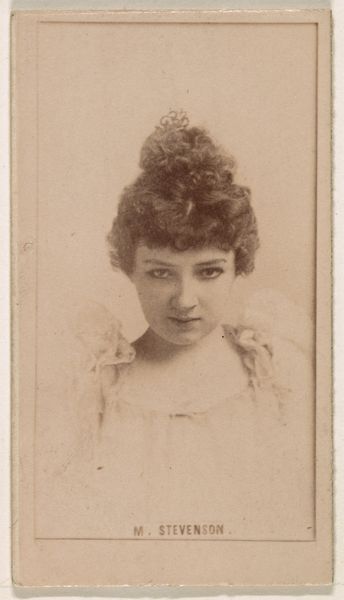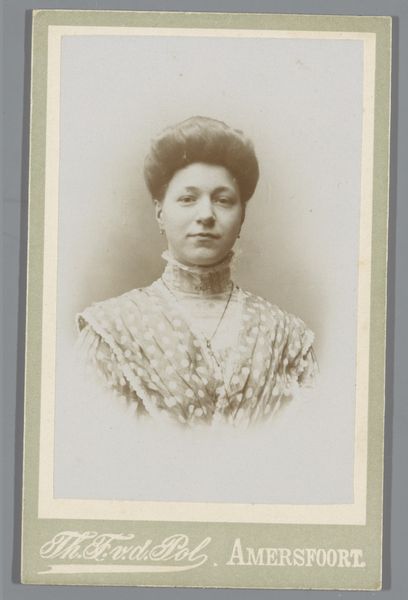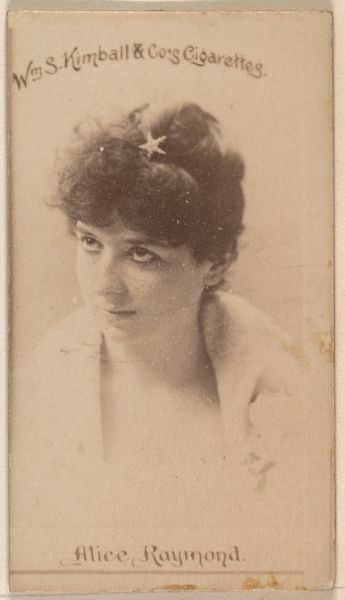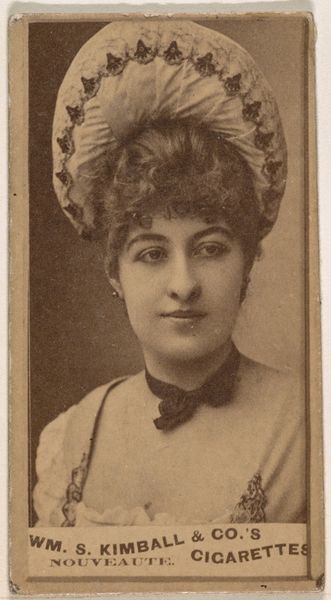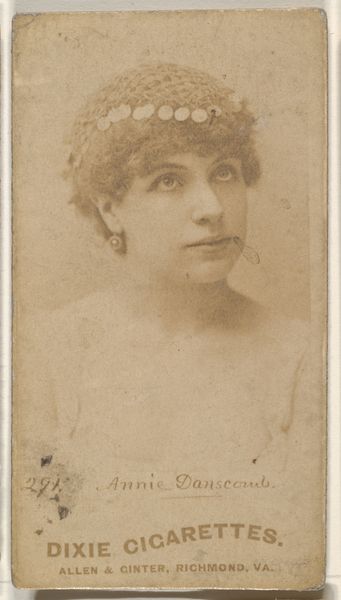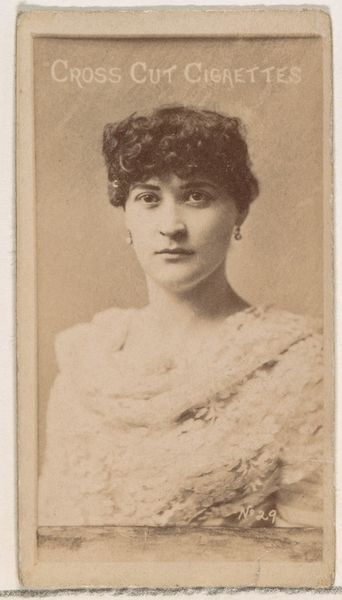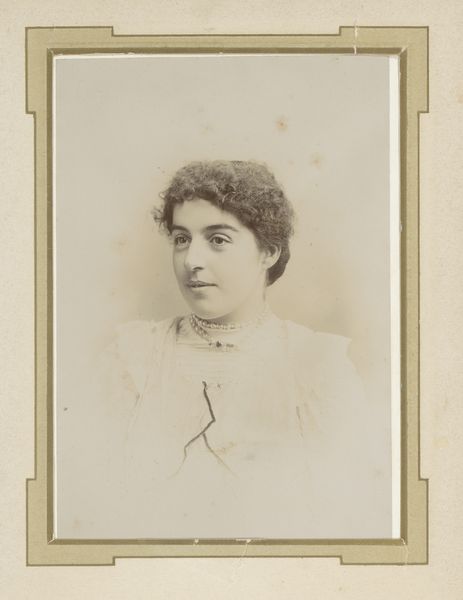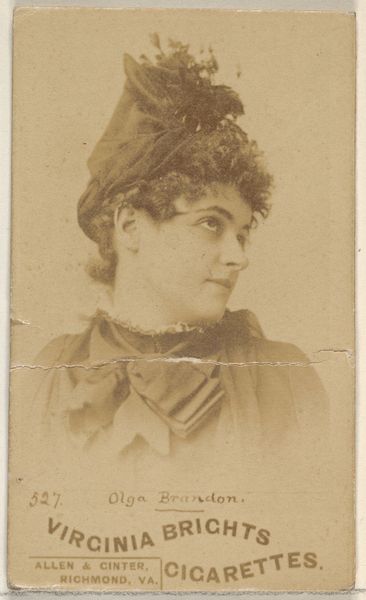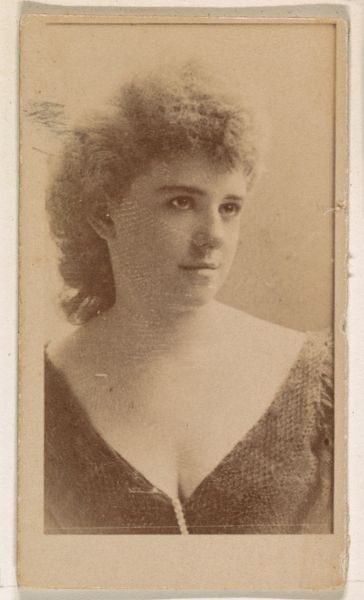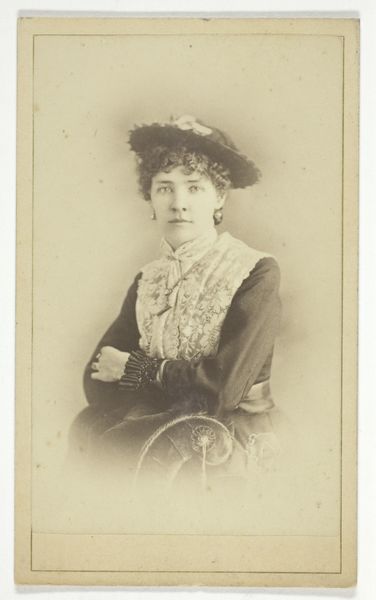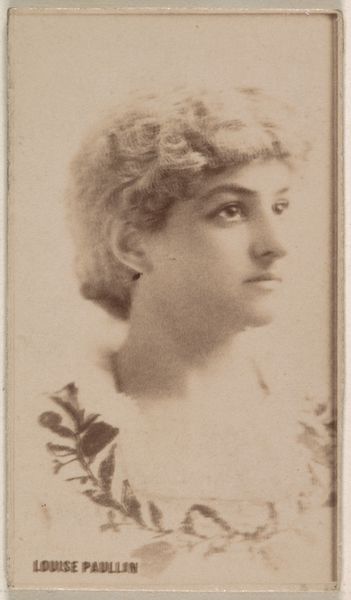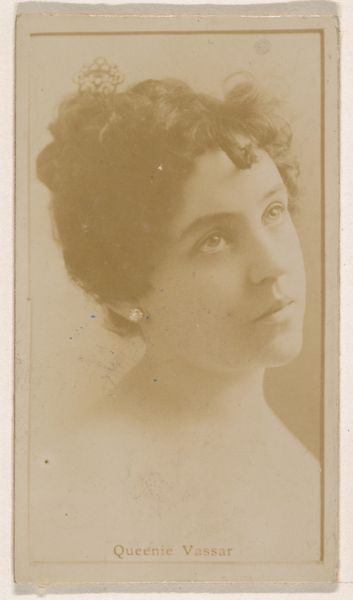
#
pencil drawn
#
aged paper
#
toned paper
#
light pencil work
#
pencil sketch
#
portrait reference
#
pencil drawing
#
coloured pencil
#
watercolour illustration
#
watercolor
Dimensions: height 90 mm, width 56 mm, height 104 mm, width 63 mm
Copyright: Rijks Museum: Open Domain
Editor: This is "Marie Witsen als jonge vrouw (Amsterdam)," by Johannes Leonardus van der Heijden, likely created sometime between 1860 and 1915. It seems to be a pencil or watercolor sketch on toned paper, and the portrait has a dreamlike quality to it. What do you see in this piece? Curator: It evokes a sense of timelessness. The softness of the pencil work, combined with the aged paper, whispers of a bygone era. The slightly faded quality almost makes her feel like a memory, a cultural artifact passed down through generations. Notice how the light catches her face – the artist skillfully used shadow to convey her inner state. Does the almost ethereal quality remind you of any symbols related to memory or transience? Editor: It does have a sense of melancholic longing. I'm also curious about the woman's clothing, which seems formal. Curator: Her attire reflects the social conventions of the time, doesn't it? This, too, is a visual language, signaling social status and identity. Her demure posture and the delicate frills on her dress tell a story about the expectations placed on women during this period. Consider how those expectations and the role of women may have shifted over time. What sort of symbolic messages might someone find in a woman’s portrait displayed at a World’s Fair? Editor: I see what you mean! Her portrayal becomes a symbol of societal values. I didn’t consider that angle at first. Curator: Indeed. It's fascinating to unravel how visual symbols, like dress or even artistic style, become encoded with meaning over time. Each element carries emotional and psychological weight, contributing to a cultural narrative. Editor: I'll definitely be looking at portraits differently from now on, considering the historical and cultural symbols they convey. Curator: Likewise, every artwork holds keys to understanding not just the artist's vision but also the cultural memory of an era.
Comments
No comments
Be the first to comment and join the conversation on the ultimate creative platform.
